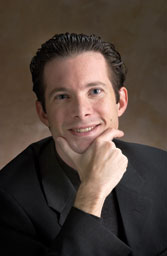
|
|
About Continuum Advertising Advisory Committee Archives Contact Us Continuum Home Faculty/Staff Subscribe related websites Alumni Association Marketing & Communications University of Utah Home |

Up frontOpening Doorsby Jason Matthew Smith, editor Just over two years ago, the president of America’s oldest university effectively insulted half of the world’s population. Speaking during an academic conference, Harvard President Larry Summers posited the theory that the dearth of women in math and science careers is because of biological differences between the sexes. Women, in other words, just aren’t built like guys, and are therefore unable to wrestle successfully with the complex calculations and ideas required to navigate engineering or scientific fields. Summers later claimed he was trying to be “provocative,” which to me sounds like an excuse leveled by a 15-year-old after flushing a cherry bomb. Public reaction to Summers’ comments—from men and women alike—was swift and severe. For some, it was hard to believe that the head of an Ivy League institution would make such inflammatory statements, based not on fact but apparently on bias. Needless to say, Summers is no longer at Harvard, and his replacement, announced in mid-February, is a respected scholar who happens to be a woman—the institution’s first female president. The real problem, of course, isn’t biology but individuals like Summers who continue to dismiss women and their contributions in all fields of study. The prevalence of such an attitude tends to create a self-fulfilling prophecy. Construct enough road blocks, and fewer women will enter scientific fields, and even more will skip out on college altogether. Statistics indicate that, nationally, more women than men are going to college. That’s the good news. The bad news is that we don’t know how many elect to drop out or change majors after being repeatedly disparaged for lacking a Y chromosome. But as Kelley Lindberg shows us in her cover story, efforts are under way to help more women enter and remain in college, and to boost the U’s number of female students, which trails national averages. It’s a task being taken seriously at all levels at the University. Real and lasting change, however, must come from the ground up, starting with individual departments. Fortunately, we’re moving in the right direction, as some have instituted top-flight programs to attract female scholars (such as the College of Science’s ACCESS Program). If further proof of the talent, dedication, and skill of women at the U is needed, a flip through these pages leads to a story by Brett Hullinger on the life of a ballet student who ably manages to balance art and academics—and to excel at both. Ann Floor introduces us to five doctors who prove that any notion that women cannot compete in the sciences is dead wrong. Linda Marion and Marcia Dibble profile alumnae Karen McCreary and Meghan Nuttall Sayres, the former the new director of the ACLU of Utah and the latter an award-winning author. Both illustrate how dedicated and impassioned alums—whether male or female—have the power to impact the lives of countless others. This issue also puts a spotlight on ophthalmologist Geoffrey Tabin and the miraculous work he’s doing in Nepal, a pair of record-setting athletic coaches, and Professor Lynette Danley Land , whose thoughtful reflections confirm that women are, indeed, blazing trails. So enjoy. And if anything in this issue strikes a chord, please don’t hesitate to let us know by dropping me an e-mail at jason.smith@ucomm.utah.edu or sending a letter to the address in the box to the right. |

|